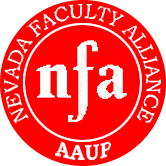While Nevada and many of our sister states have chosen to drastically reduce funding to higher education as a means to balance the budget, our neighbors to the north have successfully implemented programs to embrace and expand higher education to promote economic recovery, growth and expansion. The article in the link below demonstrates the success Canada has achieved under this philosophy:
Ontario Plans Increased Higher Ed Capacity
The government of Ontario on Monday announced plans to provide funds to create 60,000 additional slots in higher education over the next five years. That growth will follow the creation of 75,000 slots between 2003 and this year (in case the link does not work, the text of the short article appears below)
Last month the Chronicle of Higher Education published a feature on the creation of the “Canada Foundation for Innovation” upon which it appears the highly successful USTAR program in Utah was modeled. In the mid 1990s, higher education officials in Canada warned of the consequences of government cuts in funding for research and the likely exodus of academic talent which would result. Canada therefore chose to invest considerable sums to finance its academic and research infrastructure. These articles note Canadian universities are now “magnets for talent internationally.” As a result of Canada’s strategic investment in education, these articles also suggest that the global recession hit harder elsewhere than in Canada. Although I previously circulated a link to the article which you may have read, a copy of the article is attached.
The experience has been that Canada has been “importing research stars and nurturing young Canadian and foreign scholars and postdoctoral students. The talk now is of brain gain, not brain drain”. One of the scholars Canada was able to attract (to the University of Western Ontario) was a neuroscientist from the prestigious University of Cambridge. The scholar also brought with him five members of his Cambridge research team. In that regard, an OpEd piece I wrote last month noted that Nevada’s universities and colleges are experiencing the adverse consequences of inadequate funding for academics and research, citing as one example UNR’s loss of a world-renowned scholar:
Utah recently lured an award-winning professor from UNR (a chemical/metallurgical scientist with some eight patents) whose subspecialty was renewable energy. With him go grants that supported institutional infrastructure, other faculty, graduate assistants and student employees (who spend money locally and pay taxes).
Similarly, more than 30 tenured faculty at UNLV are actively interviewing at other institutions where they are being recruited; USC plucked away one UNLV professor, describing their new recruit as a “superstar hire.”
Many have heralded the success of the USTAR program in Utah which “focuses on leveraging the proven success of Utah’s research universities in creating and commercializing innovative technologies to generate more technology-based jobs and an expansion of Utah’s tax base.” As a result of Utah’s investment in research and technology, through June of 2010, “USTAR researchers have brought more than $44 million of new out-of-state research funding to Utah” and in the process, “created an estimated 1,984 jobs.” (USTAR “Update 2010,” www.innovationalutah.com). However, it is worthy to note that while the State of Utah has a population roughly comparable to Nevada’s, its two public research universities mentioned in the report (University of Utah and Utah State) have approximately twice as many professors as do UNR and UNLV; if one includes BYU in the equation, the proportion grows even larger.
While in light of local economic issues we cannot expect our Nevada legislature to invest the considerable sums Utah and Canada have done, nevertheless now is also not the time to remove another $162± million from higher education. UNLV has already seen $50 million withdrawn from its budget over the past four years (resulting in the loss of some 540 positions and the closure of six departments). Current plans would cut another $33 million and 315 faculty and staff positions, eliminating 33 degree programs in education, business, engineering and health sciences. Before these cuts, UNLV’s economic impact on the Southern Nevada economy exceeded $1.0 billion per year. Not only will the reductions aggravate the loss of talented faculty, the community as a whole will suffer the consequences.
Thank you for your consideration of my comments and recommendations.
Bill Cobb
WILLIAM G. COBB
Member, Board of Regents
Nevada System of Higher Education
Post Office Box 3559
Reno, Nevada 89505
775.786.3930 (ext 225)
775.786.4160 (fax)
Thursday, March 31, 2011
Subscribe to:
Post Comments (Atom)






No comments:
Post a Comment